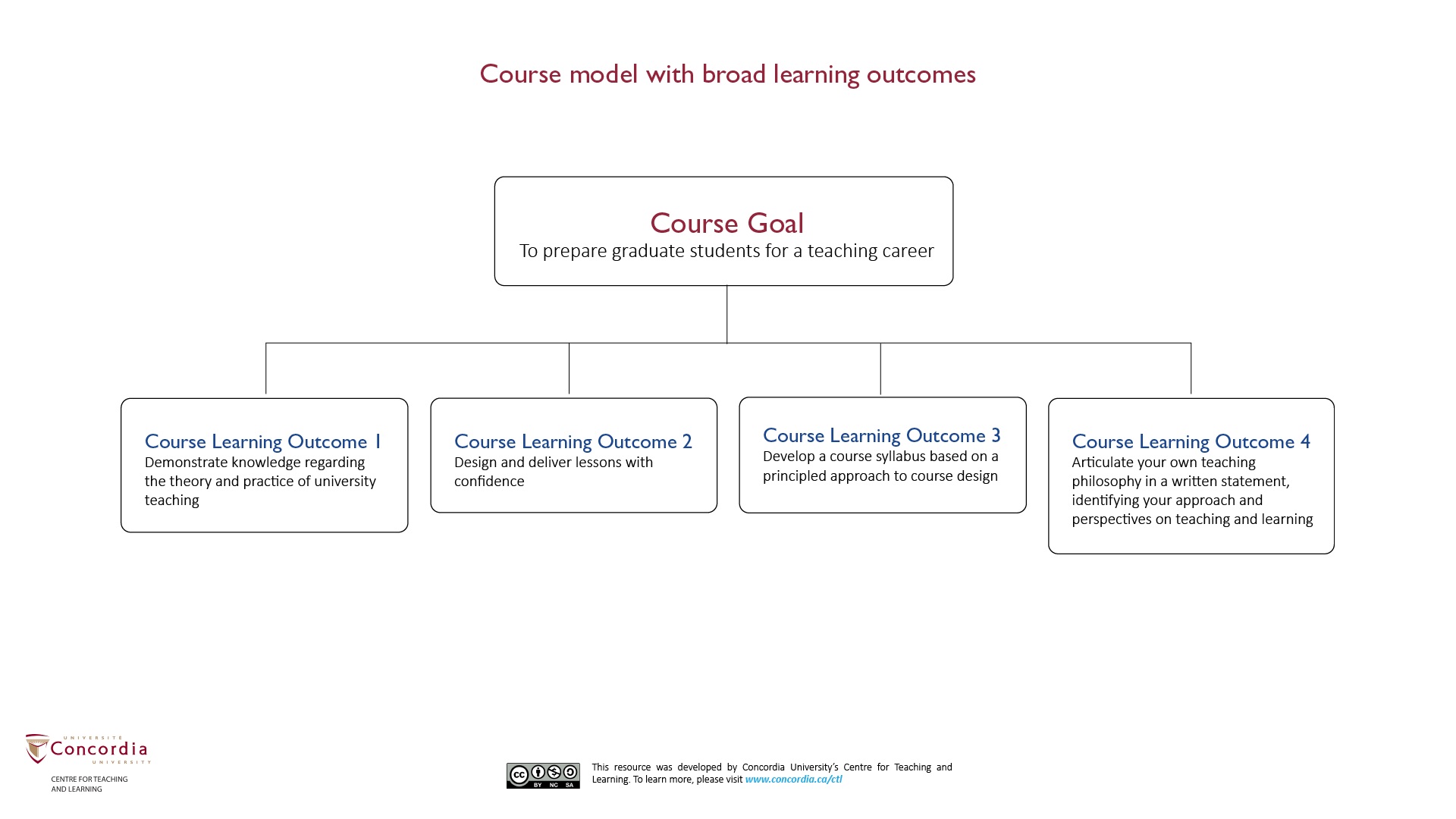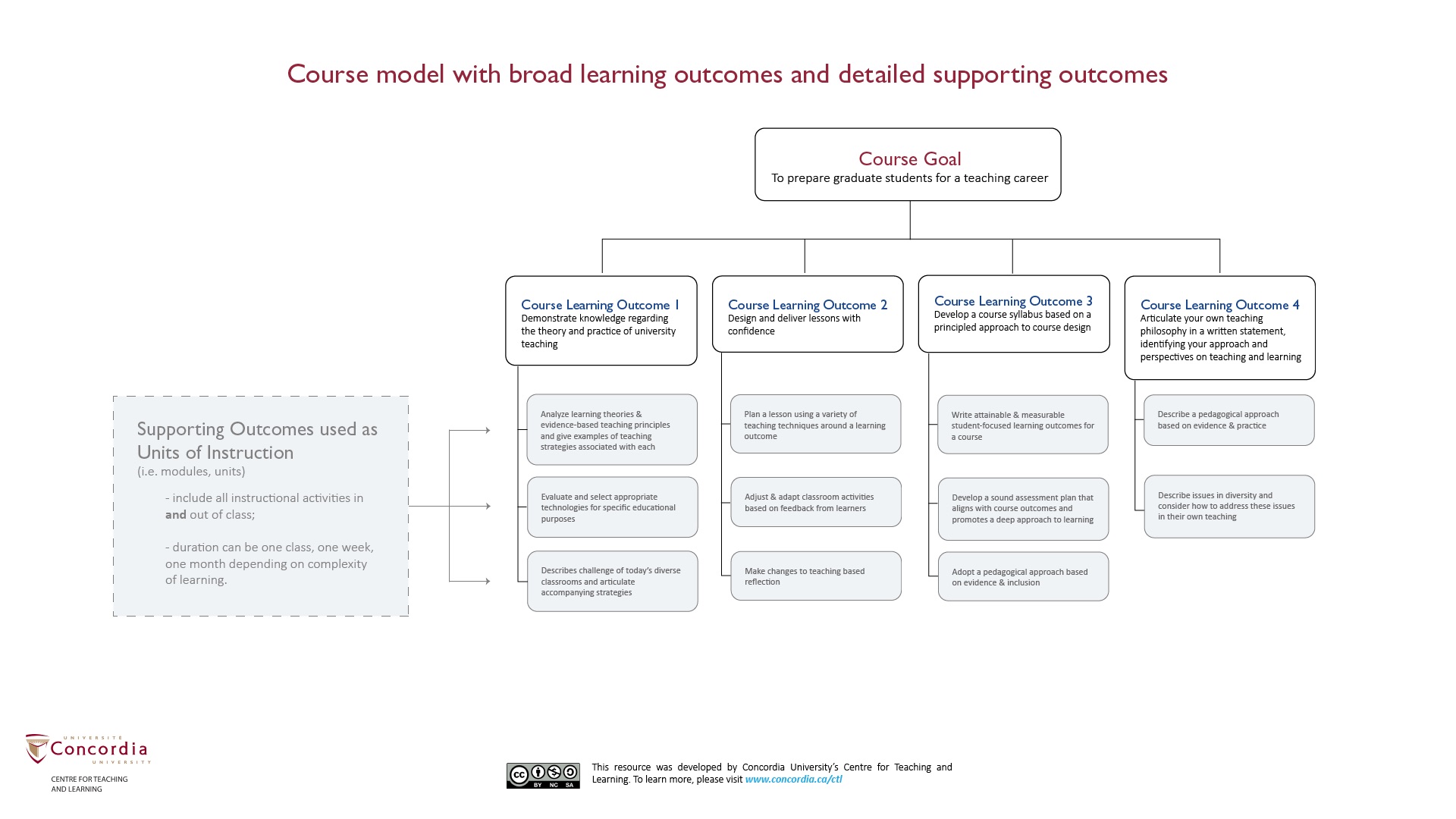How does instructional planning promote teaching excellence?
In brief
- Instructional planning is the deliberate selection and sequencing of learning activities both in and out of the classroom to best support the achievement of the learning outcomes.
- Typically, instructional planning works at the unit level with one or two learning outcomes as its anchor. A unit may span over a few weeks and include one or more in-class sessions. You may need to break your course down into smaller, more manageable chunks for planning.
Instructional planning is about creating a roadmap for your course that centers around your course learning outcomes. It is comprised of all course learning activities in- and out-of-class. Depending on your class schedule and delivery mode, your planning will help you break down and organize our course into manageable chunks, which we will refer to as units of instruction. Each unit of instruction will typically span a timeframe that lasts from one to three weeks, but this may vary depending on the complexity of your learning outcomes.
Example
In a biology class, you may be able to break down the following course-level learning outcomes as follows:
Students will be able to describe the structure and function of the cell:
- Use theories, paradigms and evidence to describe how cell theory has developed over time.
- Compare and contrast different types of cells.
- Explain how organelles manage cell processes.
When planning any aspect of a course, you should first consider the context of the specific lesson in the entire course, and how it relates to the course goals and learning outcomes. Additionally, before planning class time, it’s important to consider what out-of-class activities will help support or inform in-class activities.
For more information on writing learning outcomes, see the module on learning outcomes.
Typical course structure
At the very minimum, every course should have one or two overarching course goals and some learner-focused, measurable course learning outcomes. The number of outcomes you have depends on the structure of your course and your pedagogical approach.
Typically, the more learning outcomes a course has, the more focused and specific they are. In many cases, these learning outcomes encapsulate specific content and make up a set of distinct units. When this is the case, such as in Figure 1, these are the natural segments that you can use to plan instruction.
Other courses have fewer learning outcomes, and these outcomes are not usually as specific and refer to broad knowledge, skills, and values such as the graduate seminar in teaching in Figure 2.
Click on the images below to expand them


Planning instruction around such broad outcomes might be challenging. However, often you can break these course learning outcomes down into supporting outcomes, which might focus on specific topics, themes or skills. For more information on developing supporting learning outcomes, refer to Course level versus supporting learning outcomes.
Figure 3 shows how the graduate teaching course has been broken down to include supporting learning outcomes that focus more on specific topics.

By identifying these supporting learning outcomes, you are essentially breaking the course down into narrower and more targeted segments that will allow you to plan instruction for your course in a manageable and focused way while building towards helping students achieve the course learning outcomes. How specific you break your course down is your choice. Generally, these supporting outcomes represent units that center around a major course concept or set of related concepts. You may choose to have several very granular supporting outcomes that hone in on specific knowledge and/or skills, or you may have a few supporting outcomes.
Planning instructional activities
Typically, when planning instructional activities, you should start at the unit level because you want to consider all the support and practice students will need around a particular concept and its associated learning outcome. Each activity in the unit serves its own purpose in helping students achieve the learning outcome. For example, some activities might serve to provide information on theories, definitions, processes, etc. while other activities focus on the practice and application of these. Together, this collection of learning activities gives students what they need to understand, practice, and apply to the related content.
Once you have identified the supporting learning outcomes for your course, you can use these as units of study to begin the instructional planning process.
What is a learning activity?
Any activity designed to support learning towards a specific goal or outcome.
Some examples of learning activities include:
- Listening to a lecture
- Watching a video
- Doing practice problems
- Reading an article
- Writing a reading response
- Participating in a group discussion

